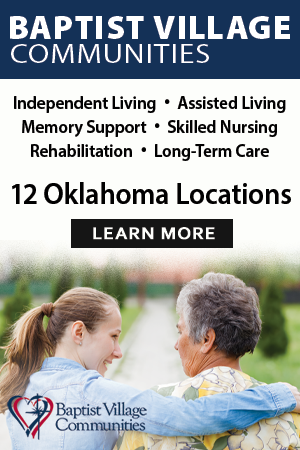I remember a day, several months ago, when I had the opportunity to talk about the Cooperative Program (CP)—a lot! That morning in the Baptist History and Theology class I was teaching at Oklahoma Baptist University, the CP was the topic of discussion.
The students had very little knowledge of the actual history and details of the CP and, consequently, had many questions. It was a great class. That afternoon, I visited with a pastor who was contemplating leading his church to join the Southern Baptist Convention (SBC). He, too, had many questions about the CP along with other Baptist distinctives.
These events prompted me to make a post on social media about the CP that resulted in a number of messages I received, asking questions and wanting more detail. By the end of the day, I had virtually done nothing but talk about the CP! However, that day reminded me that the CP is worth talking about and, more than that, worth participating in. So, what is the CP, and how does it work?
In the days before the CP, SBC entities raised their own support entirely through direct appeals to the churches (known by some as a “societal” method of raising support). This method caused competition, overlap and disorganization. In 1919, leaders in the SBC sought a better approach to fund missions and ministries. They launched what was called the $75 Million Campaign (over five years) where churches made pledges to corporately fund the entities and state conventions.
Springing from this idea rose the Cooperative Program, established in 1925, where churches agreed to give certain percentages of undesignated receipts to fund the missions and ministries of the SBC. The CP resulted in providing stability and stronger support for SBC missions/ministries.
How does the CP work today and, more specifically, how does it work among our SBC churches in Oklahoma? Let’s say for ease of illustration that a church gives 10 percent of its undesignated receipts to the CP. If a person in that church gives $10 in the offering, then $1 is sent to our Oklahoma Baptists state convention. Here’s the amazing journey of that dollar bill:
Oklahoma Baptists keep 42 cents of that dollar for its ministries (Falls Creek/CrossTimbers, Disaster Relief, training events, church planting, Baptist Collegiate Ministries, etc.), and 15 cents is distributed to our state affiliates (Oklahoma Baptist University, Oklahoma Baptist Homes for Children, Baptist Community Villages, and WatersEdge). Oklahoma Baptists then send the remaining 43 cents to the SBC (other SBC state conventions have similar allocations).
The SBC sends 22 cents of that 43 cents to the International Mission Board, and about 10 cents to the North American Mission Board. About 9 cents are divided out to our six SBC seminaries and the remaining few cents are allocated to other SBC ministries, including the SBC Annual Meeting.
It’s amazing that a $10 bill in the offering plate not only supports the local church, but so many other ministries! To me, the CP is one of the greatest reasons to be involved in and support the SBC. It gives every SBC church of every size the opportunity to collectively fund a variety of global missions and ministries.
I am grateful for the Cooperative Program and grateful for the many churches in Oklahoma that, through their support of the CP, make a difference in advancing the Gospel throughout the world.





